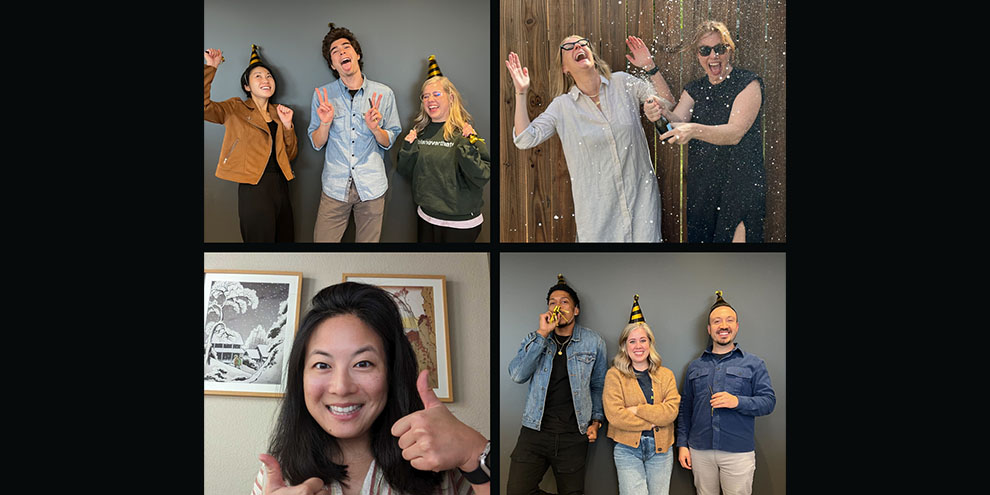Q&A with Tinder and Current Forward
Editor's note: Tinder and Current Forward are finalists of the 2023 Client/Supplier Collaboration award which is a category in the Marketing Research and Insight Excellence Awards. The winners of the awards will be announced on November 14 during a virtual celebration. To find out more about the awards, visit QuirksAwards.com.
Tinder and Current Forward represent one of four finalists for the 2023 Client/Supplier Collaboration Award. To learn more about the partnership between the companies, we reached out to Lillian Brown, co-founder of Current Forward.
How do you uphold each company’s mission while collaborating?
Tinder and Current Forward have overlapping objectives: harness the power of human connection to be catalysts for action. Both companies recognize that genuine human connection, and its continuous evolution, are at the core of their work. By acknowledging this shared emphasis on connection, both companies found a foundation upon which to build a collaborative partnership.
When conducting and sharing out the results of our Gen Z research, Tinder and Current Forward focused on identifying the best ways to connect with stakeholder audiences. The result was a highly visual and engaging “Who is Gen Z?” internal website that showcased why this generation is an important business priority, educated visitors on how Gen Zers approach love and dating and offered opportunities for Tinder to service them. The website pulled in data from our multiphase qualitative research efforts, as well as various internal data sources to tell a collective business story. The website acted as an always-on artifact that captured the attention of its audience and created resonance via multimedia storytelling.
Together, the Tinder and Current Forward teams transformed insights into actionable strategies through compelling presentation, fostering connections between data and decision-makers.
What skill sets do you find most valuable in a client/supplier collaboration?
Core tenets of our partnership are creative and critical thinking, executional consistency and agility.
When it comes to doing research with Gen Z, we know that this is a generation that doesn’t like to be pinned down and generalized. Their mind-sets, body language, terminology and colloquialisms are nuanced. In order to deeply understand what our Gen Z audience is going through, and ultimately how Tinder can service them, we had to employ creative research methodologies. Current Forward captured the dynamic of Gen Z friend groups via proprietary “Snap-and-Chat” sessions. Moving beyond the traditional research facility setting, Current Forward recreated the intimate in-home experience by inviting friend groups into Instagram-worthy properties. The environment acted as neutral territory for free expression and also provided creative inspiration for participants who were asked to create collages that reflected their thoughts on dating. Going beyond traditional methodologies opened doors to an innovative approach that yielded richer insights.
In addition to creative and critical thinking, the ability to execute consistently provides significant value to collaborative efforts. Uncovering useful insights is essential to any research work, but delivering them in a format that makes them more easily implemented in an organization is just as critical. By providing a website that served as a central hub for insights, teams throughout the organization were able to quickly access foundational insights required to drive cross-departmental decisions.
Finally, the ability and willingness to work in an agile manner fueled our collaboration. Iterative insight development enabled us to focus and go deep in areas that drove the greatest internal impact. Additionally, we developed internal DIY workshop tools so teams could quickly apply the insights to their work.
How has collaboration impacted each company?
By combining Current Forward's expertise in youth culture and consumer insights with Tinder's extensive knowledge of online dating behavior, we embarked on a groundbreaking exploration of Gen Z's attitudes, preferences and digital behaviors. This collaboration allowed us to gain unique insights into the demographic's evolving dating habits and the broader implications for digital social interaction.
Both teams’ ability to engage in meaningful and honest dialogue about the research findings built a foundation of trust and respect. That relationship enabled us to not only provide the organization with valuable opportunities for winning with a younger demographic, but also to ensure that the work was integrated into the daily considerations of interdisciplinary working teams.
